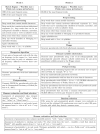Constructing Pseudowords with Constraints on Morphological Features - Application for Polish Pseudonouns and Pseudoverbs
- PMID: 35930208
- PMCID: PMC9646586
- DOI: 10.1007/s10936-022-09884-6
Constructing Pseudowords with Constraints on Morphological Features - Application for Polish Pseudonouns and Pseudoverbs
Abstract
Pseudowords allow researchers to investigate multiple grammatical or syntactic aspects of language processing. In order to serve that purpose, pseudoword stimuli need to preserve certain properties of real language. We provide a Python-based pipeline for the generation of pseudoword stimuli that sound/read naturally in a given language. The pseudowords are designed to resemble real words and clearly indicate their grammatical class for languages that use specific suffixes from parts of speech. We also provide two sets of pseudonouns and pseudoverbs in Polish that are outcomes of the applied pipeline. The sets are equipped with psycholinguistically relevant properties of words, such as orthographic Levenshtein distance 20. We also performed two studies (overall N = 640) to test the validity of the algorithmically constructed stimuli in a human sample. Thus, we present stimuli that were deprived of direct meaning yet are clearly classifiable as grammatical categories while being orthographically and phonologically plausible.
Keywords: Grammar; Linguistic processing; Pseudowords; Psycholinguistics; Wuggy.
© 2022. The Author(s).
Conflict of interest statement
The authors declare no conflict of interest. This research was funded by the National Science Centre, Poland (OPUS 14: 2017/27/B/HS6/01049), and has been approved by the Ethical Committee of Psychology Department of Nicolaus Copernicus University in Toruń (decision no. 9/2018). Prior to taking part in the studies presented in this article, participants provided informed consent.
The authors declare no conflict of interest.
Figures
Similar articles
-
UniPseudo: A universal pseudoword generator.Q J Exp Psychol (Hove). 2024 Feb;77(2):278-286. doi: 10.1177/17470218231164373. Epub 2023 Apr 18. Q J Exp Psychol (Hove). 2024. PMID: 36891822
-
Linguistic and emotional responses evoked by pseudoword presentation: An EEG and behavioral study.Brain Cogn. 2023 Jun;168:105973. doi: 10.1016/j.bandc.2023.105973. Epub 2023 Apr 13. Brain Cogn. 2023. PMID: 37060645
-
The processing of pseudoword form and meaning in production and comprehension: A computational modeling approach using linear discriminative learning.Behav Res Methods. 2021 Jun;53(3):945-976. doi: 10.3758/s13428-020-01356-w. Behav Res Methods. 2021. PMID: 32377973 Free PMC article.
-
Linear grammar as a possible stepping-stone in the evolution of language.Psychon Bull Rev. 2017 Feb;24(1):219-224. doi: 10.3758/s13423-016-1073-y. Psychon Bull Rev. 2017. PMID: 27368633 Review.
-
Using sound to solve syntactic problems: the role of phonology in grammatical category assignments.Psychol Rev. 1992 Apr;99(2):349-64. doi: 10.1037/0033-295x.99.2.349. Psychol Rev. 1992. PMID: 1594729 Review.
Cited by
-
The Power of Positive Reporting: Examining China's Anti-Epidemic National Image in Mainstream Media.J Psycholinguist Res. 2023 Dec;52(6):2047-2073. doi: 10.1007/s10936-023-09979-8. Epub 2023 Jul 7. J Psycholinguist Res. 2023. PMID: 37418071
References
-
- Álvarez CJ, Carreiras M, De Vega M. Syllable-frequency effect in visual word recognition: Evidence of sequential-type processing. Psicológica. 2000;21(2):341–374.
MeSH terms
Grants and funding
LinkOut - more resources
Full Text Sources


